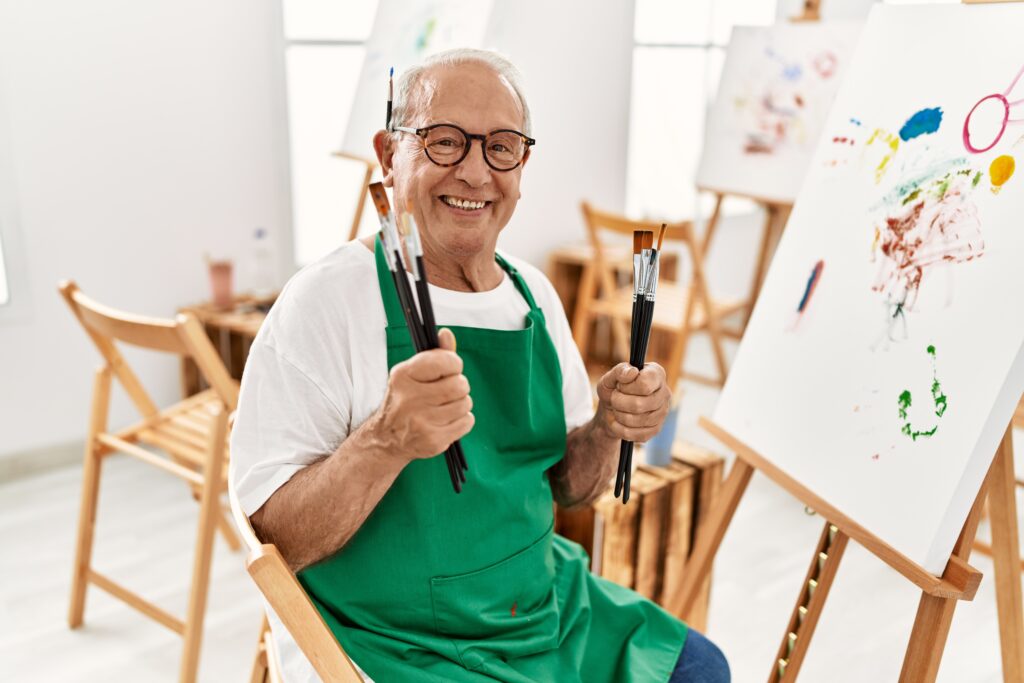
Art has long been known to provide therapeutic benefits for individuals with cognitive and physical impairments. For those living with dementia, art can serve as an essential outlet for self-expression, communication, and cognitive stimulation. However, traditional art supplies can be challenging for individuals with dementia to use, as they often require fine motor skills, memory, and dexterity that may be compromised due to the condition. Designing accessible art supplies tailored to the unique needs of those living with dementia can significantly enhance their experience, promote independence, and foster a sense of accomplishment. In this article, we will explore the importance of accessible art supplies for individuals with dementia and provide suggestions for creating or sourcing adaptive art tools.
The Importance of Accessible Art Supplies
Engaging in artistic activities can be particularly beneficial for people with dementia, as it allows them to express themselves, even when their verbal communication abilities are limited. Art therapy has been shown to improve mood, reduce anxiety, and promote social interaction among individuals with dementia. Additionally, art activities can provide a sense of purpose, maintain identity, and preserve dignity for those affected by the condition.
Unfortunately, traditional art supplies may pose challenges for individuals with dementia, as they often require precise motor skills, concentration, and patience. In turn, these barriers may lead to frustration and disengagement, negating the potential benefits of the activity. By offering accessible art supplies specifically designed for those with cognitive and physical impairments, we can create more inclusive and enjoyable artistic experiences for individuals with dementia.
Tips for Creating or Sourcing Accessible Art Supplies
Adapted Brushes and Painting Tools
Traditional paintbrushes may be difficult for some individuals with dementia to grip and control. Consider sourcing or creating adapted brushes with larger, ergonomic handles, designed for an easier grip. Additionally, explore alternative painting tools like sponge brushes, roller brushes, or even everyday items like sponges, cotton balls, or textured materials that can be dipped in paint and applied to the canvas.
Non-toxic and Washable Materials
As dementia progresses, individuals may struggle with distinguishing between edible and inedible substances. To ensure safety, choose non-toxic art supplies that can be easily washed off surfaces, clothing, and skin. Washable paints, markers, and crayons can provide peace of mind for caregivers while encouraging creativity in individuals with dementia.
High-Contrast, Bold Colors
Visual impairments are common among individuals with dementia. High-contrast, bold colors can be more easily perceived and recognized, making them ideal for accessible art supplies. Offer a range of colors with stark contrasts to ensure that participants can distinguish between different shades and create visually stimulating artwork.
Simplified Supplies and Materials
Complex art supplies and techniques can be overwhelming for individuals with dementia, leading to frustration and disengagement. To accommodate their needs, provide simplified materials and tools that allow for more manageable artistic exploration. For example, instead of a large paint palette with numerous colors, provide a smaller palette with fewer colors or pre-mixed shades. Similarly, consider offering pre-cut or pre-drawn shapes and templates that can be easily traced, colored, or painted.
Adapted Surfaces and Workspaces
Traditional easels or small canvases may be challenging for individuals with dementia due to their limited mobility and dexterity. To create a more accessible experience, consider using large, flat surfaces like tables or desks that are easily reachable and can accommodate wheelchairs or other mobility aids. Large sheets of paper or canvases can also be taped or secured to walls, allowing participants to paint or draw in a comfortable, upright position.
Sensory Art Experiences
For individuals with dementia, incorporating sensory elements into art activities can be highly beneficial. Using textured materials like clay, playdough, or sand can provide tactile stimulation while promoting creativity. Engaging in activities that involve the senses can also help to trigger memories, enhance cognitive function, and provide a unique and enjoyable experience.
Supportive and Encouraging Environment
One of the most crucial aspects of creating accessible art experiences for individuals with dementia is fostering a supportive and encouraging environment. Caregivers, family members, and art instructors should be patient, empathetic, and understanding of the unique challenges faced by those with dementia. Emphasize the process of creation and self-expression rather than the final product, and encourage participants to explore their artistic abilities at their own pace. Remember, the goal is to facilitate meaningful engagement and enjoyment, not to achieve perfection.
Collaborative Art Projects
Collaborative art projects can be an excellent way for individuals with dementia to engage with others and feel a sense of accomplishment. Working together on a shared piece can encourage social interaction, teamwork, and communication. Consider organizing group mural projects, collages, or even simple art activities that allow participants to contribute their unique touches to a larger, collective artwork.
Creating accessible art supplies for individuals with dementia can have a profound impact on their quality of life, cognitive function, and emotional well-being. By designing and sourcing art tools that cater to their unique needs, we can empower people with dementia to express themselves, connect with others, and find joy in artistic creation. By fostering an inclusive and supportive environment, we can help to break down barriers and provide opportunities for meaningful engagement and self-expression for those living with dementia. Ultimately, the goal is to empower these individuals, enabling them to experience the therapeutic benefits of art and maintain a sense of dignity and purpose as they navigate the challenges of their condition.





